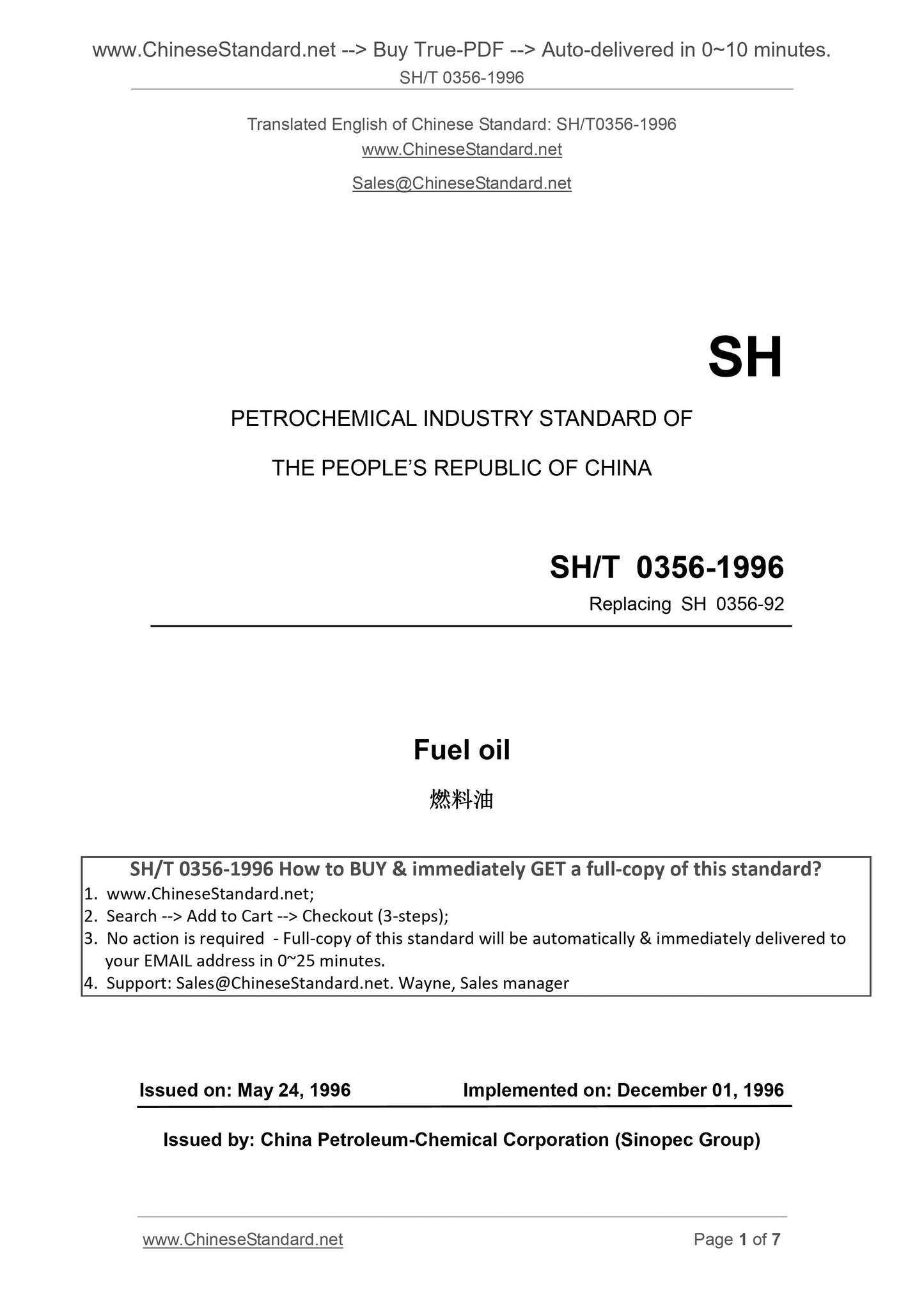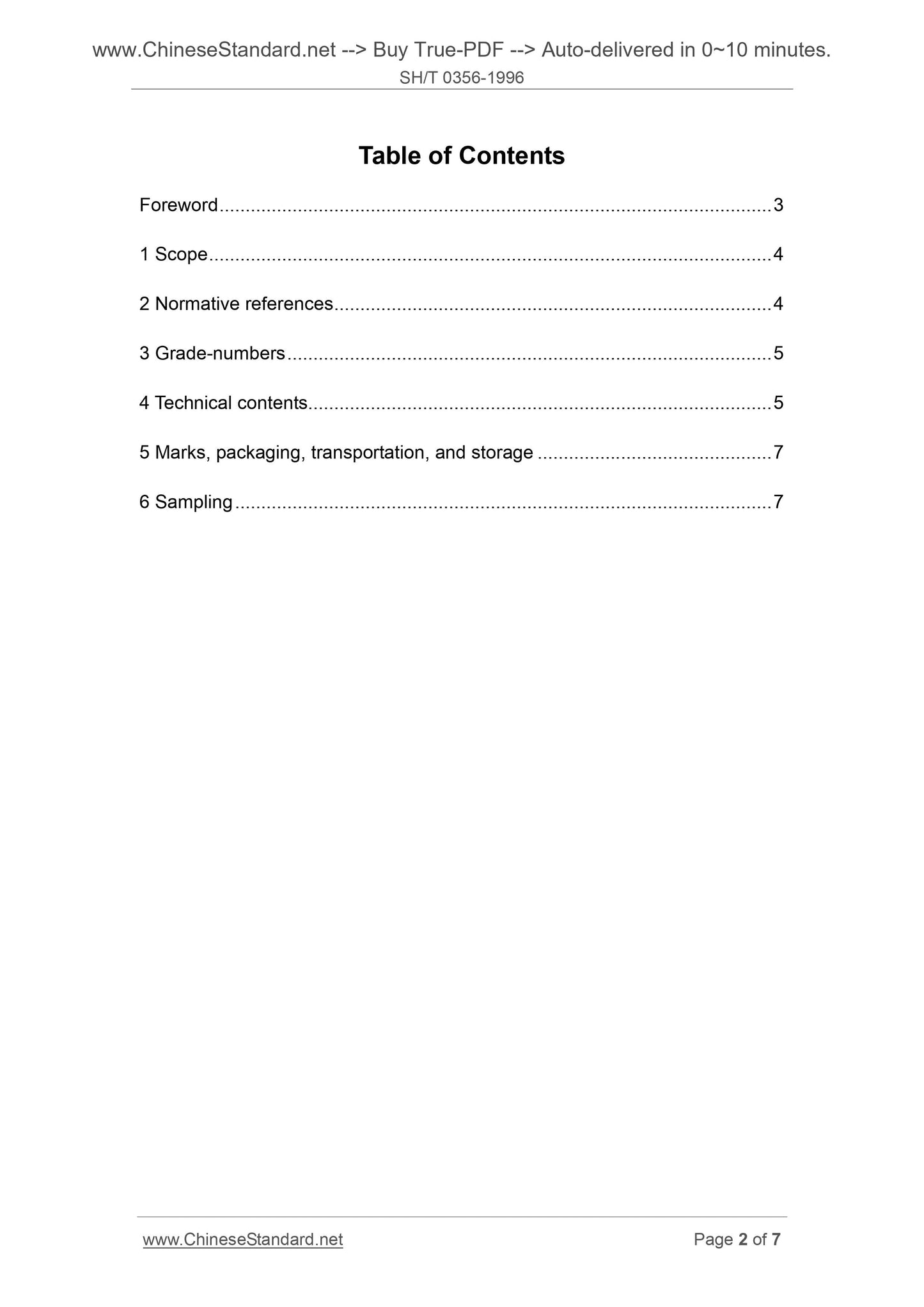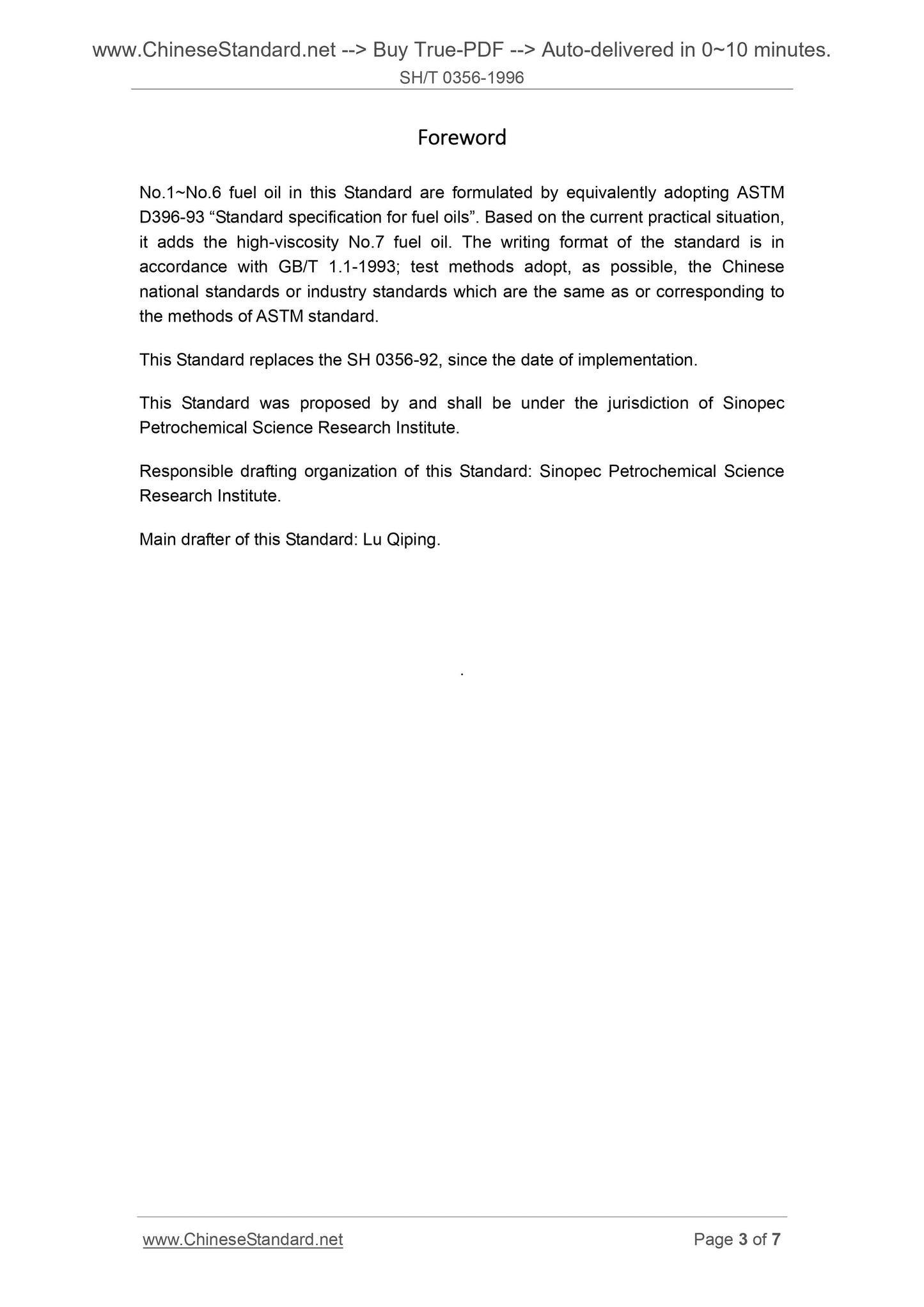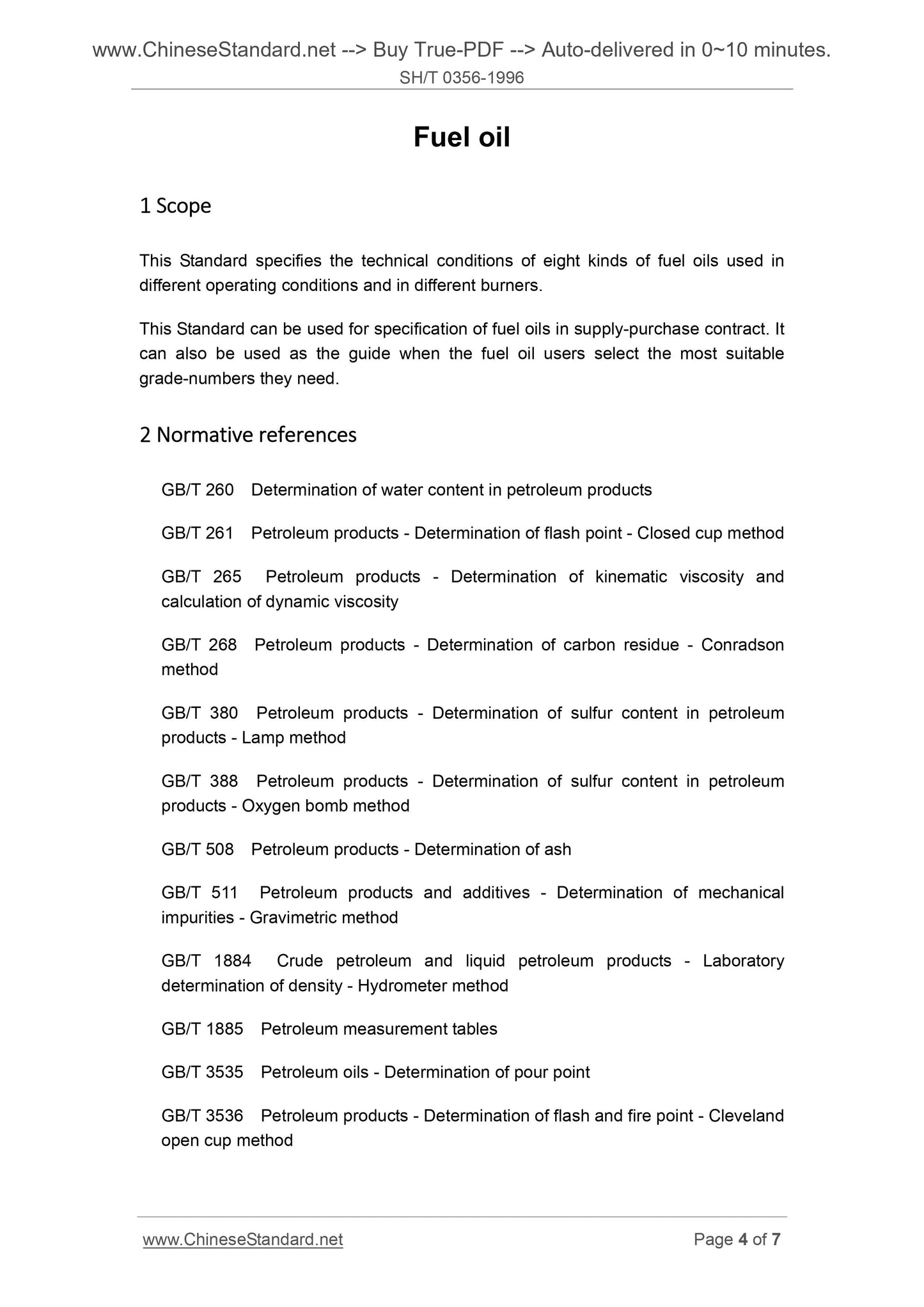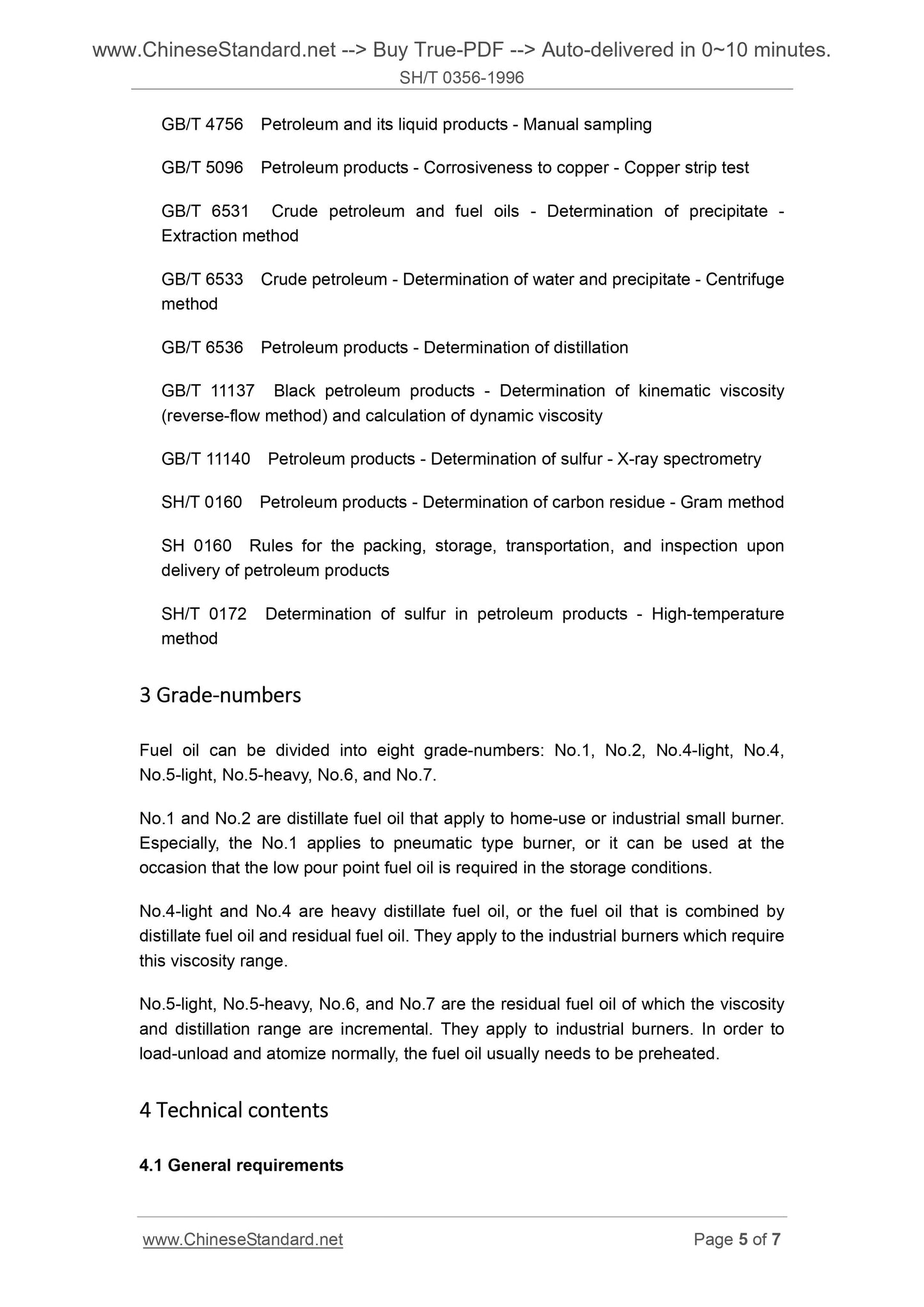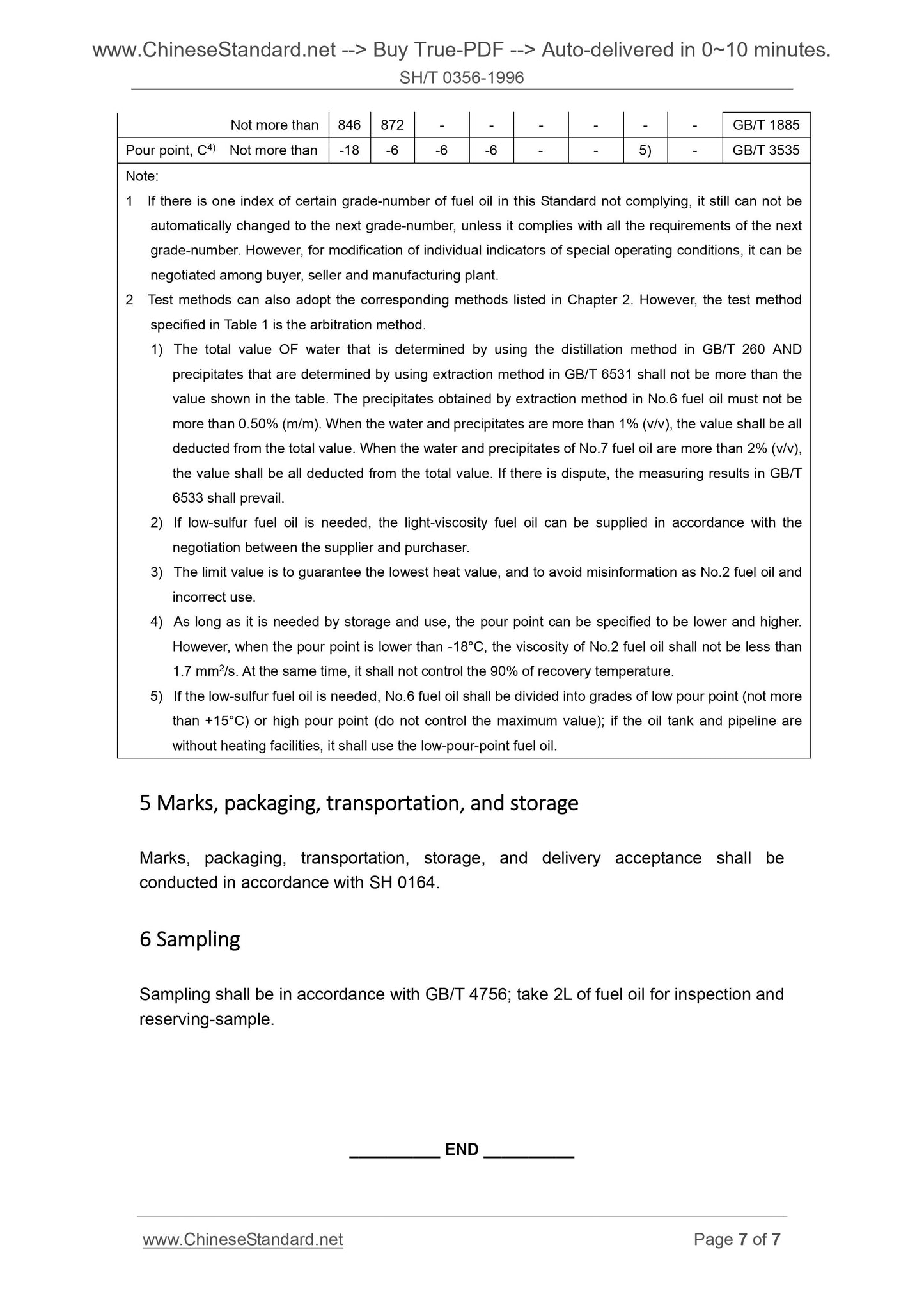1
/
of
6
www.ChineseStandard.us -- Field Test Asia Pte. Ltd.
SH/T 0356-1996 English PDF (SH/T0356-1996)
SH/T 0356-1996 English PDF (SH/T0356-1996)
Regular price
$70.00
Regular price
Sale price
$70.00
Unit price
/
per
Shipping calculated at checkout.
Couldn't load pickup availability
SH/T 0356-1996: Fuel oil
Delivery: 9 seconds. Download (and Email) true-PDF + Invoice.Get Quotation: Click SH/T 0356-1996 (Self-service in 1-minute)
Newer / historical versions: SH/T 0356-1996
Preview True-PDF
Scope
This Standard specifies the technical conditions of eight kinds of fuel oils used indifferent operating conditions and in different burners.
This Standard can be used for specification of fuel oils in supply-purchase contract. It
can also be used as the guide when the fuel oil users select the most suitable
grade-numbers they need.
Basic Data
| Standard ID | SH/T 0356-1996 (SH/T0356-1996) |
| Description (Translated English) | Fuel oil |
| Sector / Industry | Petrochemical Industry Standard (Recommended) |
| Classification of Chinese Standard | E31 |
| Word Count Estimation | 6,699 |
| Date of Issue | 5/24/1996 |
| Date of Implementation | 12/1/1996 |
| Older Standard (superseded by this standard) | SH 0356-1992 |
| Quoted Standard | GB/T 260-1977; GB/T 261-1983; GB/T 265-1988; GB/T 268-1987; GB/T 380-1977; GB/T 388-1964; GB/T 508-1985; GB/T 511-1988; GB/T 1884-1992; GB/T 1885-1983; GB/T 3535-1983; GB/T 3536-1983; GB 4756-1984; GB/T 5096-1985; GB/T 6531-1986; GB/T 6533-1986; GB 6536-1986; GB/T 11137-1989; GB/T 11140-1989; SH/T 0160-1992; SH 0164-1992; SH/T 0172-1992 |
| Adopted Standard | ASTM D396-1993, MOD |
| Regulation (derived from) | Petroleum Products Industry Standard compilation 2010 |
| Summary | This standard specifies the technical conditions for eight fuel oil on different operating conditions and the use of different burners. The standard contract for the supply and demand for fuel oil specifications when used, but also for the user to select the optimum fuel the whole time they guide requires grades. |
Share
